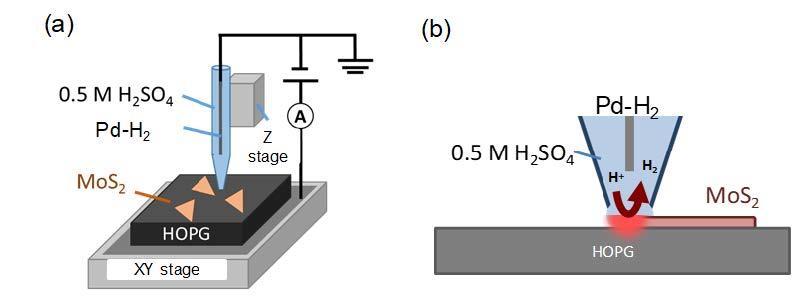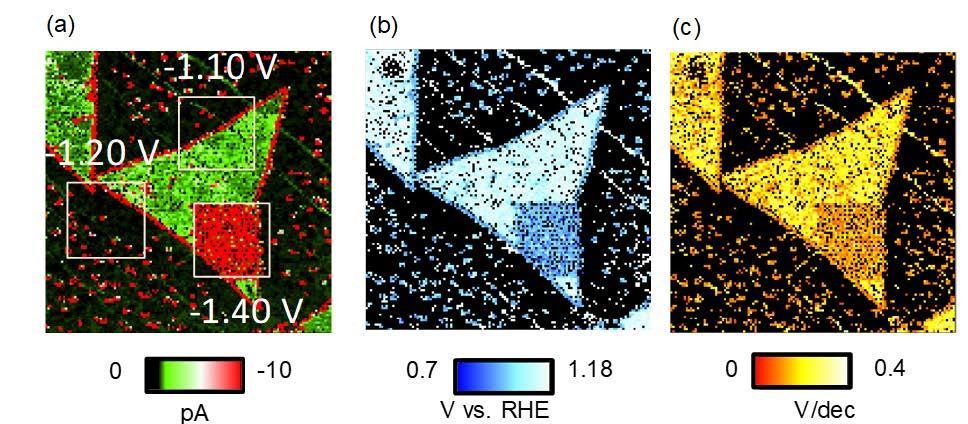- TOP
- NEWS & TOPICS
- Success in electrochemical imaging of na…
2019.12.13About KUT / Academics / Research / Students Life
Success in electrochemical imaging of nanoscale catalytically active sites of hydrogen evolution catalysts by a joint research group of Prof. Fujita
KUT Professor Takashi Fujita is a member of a joint research group which has successfully improved the resolution of the scanning electrochemical cell microscope (SECCM), a type of scanning probe microscope, and used the improved SECCM in electrochemically imaging the catalytic activity sites of transition metal chalcogenide nanosheets, which are expected to serve as catalysts for hydrogen evolution reaction (HER). The other members of the group are Associate Professor Yasufumi Takahashi of Kanazawa University Nano Life Science Institute, Professor Tomokazu Matsue of Tohoku University, Professor Mingwei Chen of Johns Hopkins University.

[Outline of SECCM measurement of MoS2 nanosheets]
(a) Principle diagram showing SECCM imaging of a hydrogen evolution reaction (HER) active site of a molybdenum disulfide (MoS2) nanosheet. (b) Enlarged view of the contact area between the nanopipette and the sample. Local electrochemical measurements were realized using the nanoscale electrochemical cell formed between the nanopipette and the sample.
Furthermore, through SECCM observations, electrochemical sulfur defects were formed locally and the team succeeded in enhancing catalytic activity and visualizing sites that are prone to degradation.

[Local electrochemical activation using SECCM]
The developments achieved in this study have made it possible to electrochemically visualize the active site of a catalyst directly, so that it can be applied not only to hydrogen evolution reaction (HER) but also to visualization of various electrochemical processes in locations such as oxygen generation sites and proton conduction sites. This development is expected to lead to the creation of design guidelines for catalyst development and the development of deterioration resistant catalysts.
The results of this research have been accepted for publication as an article in the online version of the German chemical journal Angewandte Chemie International Edition on November 28, 2019.
Professor Fujita spoke of his aspirations that "This research was started as a part of interdisciplinary research about three years ago, and we are very honored to produce the outcomes that will contribute to society. We will deepen our research with researchers in various fields in the future in order to produce more results."
Click here to view "Angewandte Chemie International Edition"
RELATED POST
関連記事
